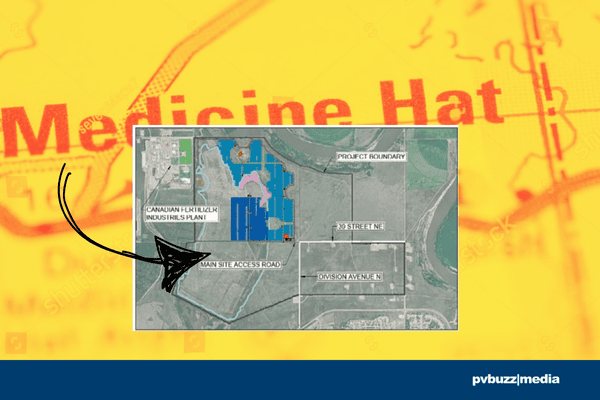- The City of Medicine Hat has officially purchased the Saamis Solar Park, the largest proposed urban solar project in Canada, following approval from the Alberta Utilities Commission (AUC).
- This acquisition positions the city as a leader in urban renewable energy, but also opens the door to public debate over the project's financial sustainability and long-term viability.
- As the city moves forward, it must balance the promise of clean energy and carbon savings against potential economic risks and community concerns.
The City of Medicine Hat has secured approval from the Alberta Utilities Commission (AUC) to purchase the Saamis Solar Park, the largest proposed solar power field for any Canadian urban municipality.
The acquisition, from Irish renewable developer DP Energy, marks a significant step in the city’s renewable energy ambitions. However, the deal comes with a stipulation: the city must submit a revised layout and phased construction plan before any final decision on proceeding with construction is made by the council.
Strategic Move or Financial Gamble?

A proposed layout of the Saamis Solar to accommodate an initial 75-megawatt phase of a 32 MW plan in north Medicine Hat. (The Medicine Hat News)
City officials heralded the acquisition as a strategic investment to mitigate rising carbon levies and diversify the city’s energy portfolio with lower-cost, renewable production.
“Now that the City of Medicine Hat owns the project, we can properly pursue more detailed analysis that will inform how to optimize the value of this new asset,” said Rochelle Pancoast, managing director of the city’s energy division. The Saamis project, situated on a 1,600-acre site in the city’s north, represents one of the few viable locations for large-scale solar production within city limits.
Yet, not everyone shares the city’s optimism.
Critics, including the Medicine Hat Utility Ratepayers Association, argue that renewable energy’s economics are volatile and question the project’s financial viability. “This is a monumental decision, which we feel should be given to the public to decide,” said Sou Boss, the association’s head, who criticized the AUC for denying the group participation in the ownership proceedings.
The association has since launched a letter-writing campaign to halt the project, citing concerns over potential costs that could reach $100 million for the initial phase.
Economic and Environmental Implications
The city’s administration argues that integrating solar power into the local grid could significantly reduce operating expenses.
Furthermore, carbon credits generated from the Saamis project are expected to offset compliance costs associated with the provincial carbon levy, which amounted to $11 million last year. The city anticipates approximately $7 million in annual carbon credit revenue from the proposed 75-megawatt first phase, excluding additional revenue from energy production.
However, the intermittent nature of solar power remains a point of contention. The city has sought a legal opinion on how this variability aligns with production caps outlined in its franchise agreement with the province. An independent assessment confirmed that the city could depend on the solar field for reliable power during peak summer demand periods.
Additionally, projections indicate that the city’s peak energy demand could climb to 250 megawatts by 2027, necessitating increased capacity to maintain reliability standards.
A Broader Trend in Alberta’s Renewable Sector
The Saamis Solar Park is part of a broader trend in Alberta’s renewable energy sector.
DP Energy originally planned similar projects in Calgary, including the Barlow and Deerfoot Solar facilities, which were later sold to Atco. These projects, now operational, highlight the growing momentum behind solar energy in the province, despite ongoing debates about economic feasibility and grid integration.
Looking Ahead
As Medicine Hat navigates the next steps—from regulatory submissions to council deliberations—the project’s future remains uncertain. While city officials emphasize the strategic benefits of local solar production, public skepticism over costs and long-term returns could influence the council’s final decision.
Regardless, the acquisition positions Medicine Hat at the forefront of urban renewable energy initiatives in Canada, setting a precedent for other municipalities grappling with the transition to sustainable power sources.
The coming months will determine whether this ambitious project becomes a cornerstone of Medicine Hat’s energy future or a cautionary tale in municipal renewable investments.












Comments